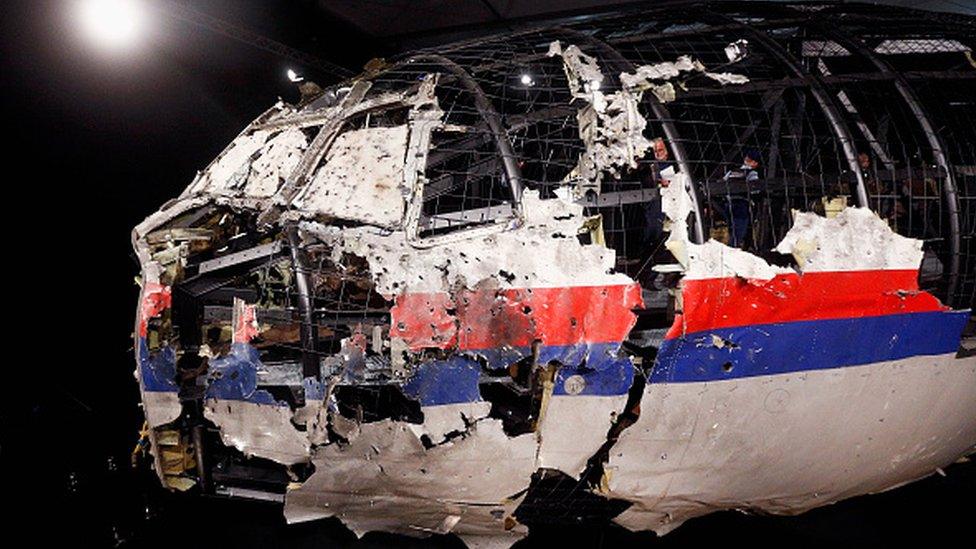MH17 plane crash: Horror and hope for families as trial starts
- Published
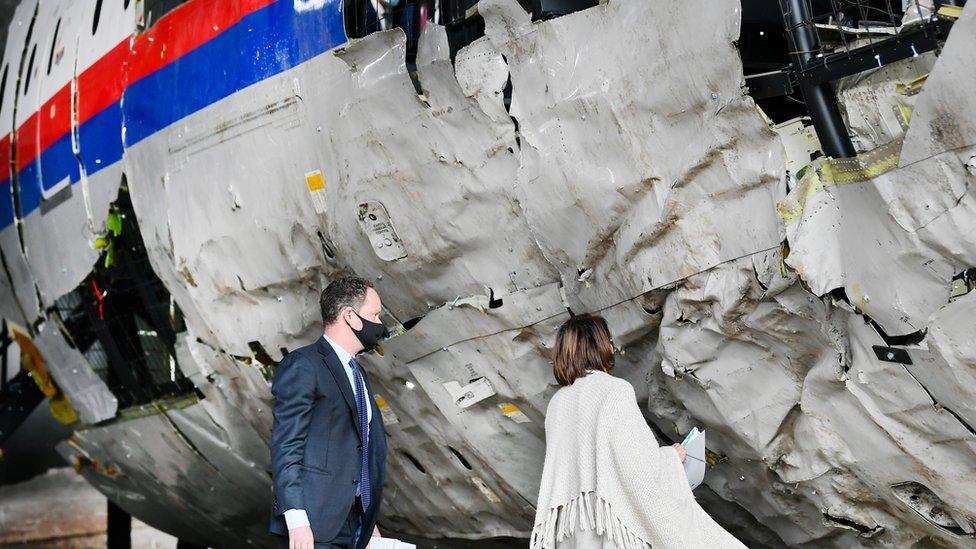
Before the trial judges inspected the reconstructed wreckage of the Malaysia Airlines plane
This is a traumatic time for families who lost 298 loved ones on flight MH17. Now they hope the trial of four men will provide answers to the downing of the Malaysian Airlines plane over eastern Ukraine in July 2014.
In the first week of the trial they have heard how distinctive bow tie-shaped steel fragments, consistent with those in a surface-to-air Buk missile warhead, were among those found lodged in the bodies of the crew, passengers' luggage and wreckage.
Listening in the high-security court next to Amsterdam's Schiphol airport, Silene Fredriksz was transported back to the horror of imagining the final moments of her 23-year-old son Bryce.
"The thought of what happened with the children when the plane was hit, how long were they conscious or not? Were they in shock, or what?" she said.
These agonising, exhausting questions plague so many of the relatives. There were 80 children on board flight MH17, which was shot down over a combat zone in eastern Ukraine, en route from Amsterdam to the Malaysian capital Kuala Lumpur.

Three Russians and a Ukrainian are accused of downing the plane and murdering everyone on board. All are suspected of being key pro-Russian separatists and none are attending the trial.
The most senior, Igor Girkin (also known as Strelkov), was commanding Russian-backed separatists in the area. Only one, Oleg Pulatov, has employed a team of Dutch lawyers to represent him.
All the accused deny involvement in the crash of flight MH17, the use of a Buk missile system by separatists and the presence of a Buk in the conflict zone in eastern Ukraine.
As the trial began, the judges said the key questions were whether the plane was shot down by a Russian-made missile, where the missile was fired from, and whether the four men on trial had played a role in the attack.

The trial is taking place in a high-security court near Schiphol airport
Extensive telephone intercepts were provided to show how the surface-to-air missile defence system arrived at the alleged launch site:
Oleg Pulatov was heard in one call, on the day of the attack, calling for "long-range artillery" because of heavy losses
Another defendant, Sergei Dubinsky, responded that "the Buk will be brought to him"
A third, Leonid Kharchenko, said it should be placed "near Pervomaiskyi".
Pervomaiskyi was a town controlled by Russian-backed separatists.
Investigators said in 2018 they had evidence of the route taken by a Russian missile convoy
Mr Pulatov has said the references to the Buk were intended to fool Ukrainian forces.
However, investigators say the missile was transported from a Russian army base belonging to the 53rd anti-aircraft brigade in Kursk. Prosecutors produced a witness account of a missile being launched from a field near Pervomaiskyi.
Presiding judge Hendrik Steenhuis concluded that Buk fragments found at the scene showed there were "no other possible conclusions".
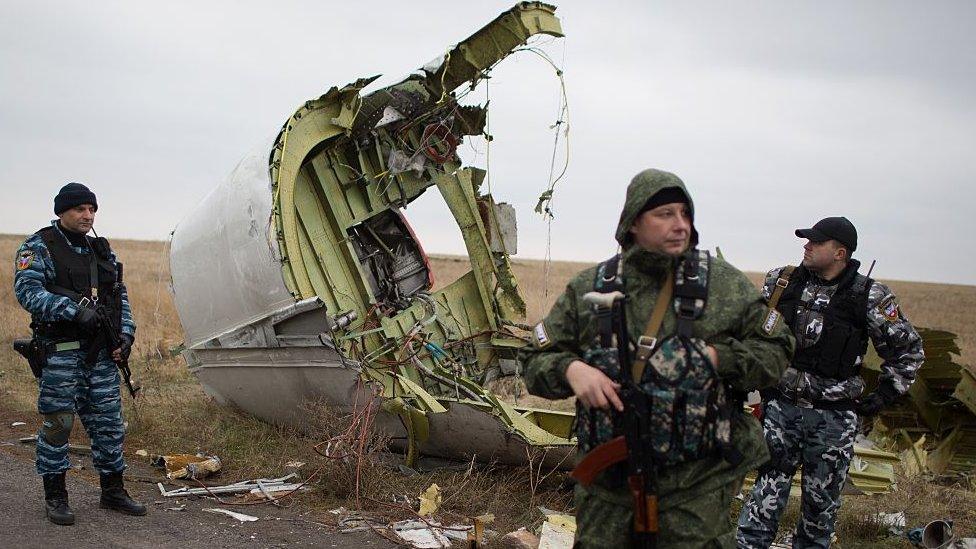
The plane came down in an area of eastern Ukraine controlled by Russian-backed separatists
Such was the meticulous sequencing of events in court that Silene Fredriksz was able to connect and retrace her son's and his girlfriend's movements.
"In my head I had the timeline of Bryce and Daisy in my head simultaneously," she told me. "How they woke up, went to Schiphol, entered the plane and flew to this area, where the Buk was and there the two timelines come together."
The court also heard details of prosecution witnesses from the pro-Russian side, including fighters present at the launch site.
Most were referred to by a number so as to protect their identities:
M58, a separatist fighter who was present at the time and gave a detailed statement
S21, a separatist fighter who said he was summoned on the evening after the plane was shot down to transport a Buk-Telar missile launch vehicle from Snizhne, a town near the launch site, to Debaltseve.
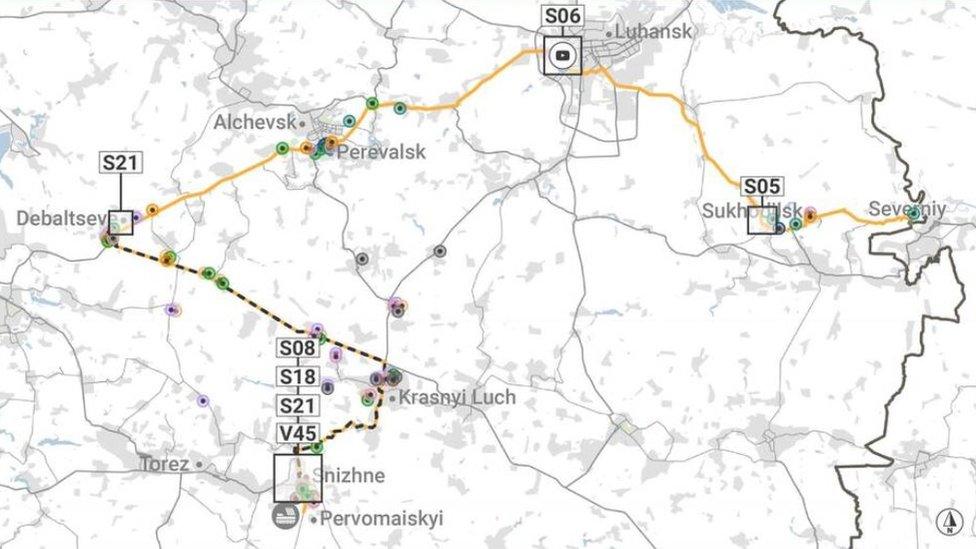
The prosecution produced this map to show the return route of the Buk missile launcher from Snizhne in eastern Ukraine to Russia

Russia has repeatedly disputed the investigators' findings and complained of prosecutors' unwillingness to use Russia's own conclusions. In March 2020, the prosecution told the court that Russia had frequently presented false claims in the seven years since the plane was shot down.
Russian rebel commander Igor Girkin told the BBC in 2020 he did not recognise the court's authority
Photoshopped images, with dates and altered satellite pictures, were presented by Moscow as alternative facts in the days after the crash, they say.
Open source material has been widely used to reveal what happened on 17 July 2014, but the array of evidence and witness statements laid out in court shows how much work the Joint Investigation Team (JIT) has done to corroborate aspects of their case.
"What I found particularly interesting was the [Buk's] route back to Russia after MH17 was shot down," said Eliot Higgins, whose Bellingcat group pioneered the use of open source data.
"There's very little information on that in open sources, so the details laid out in court provided a lot of previously unknown details, and demonstrated the range of evidence and witnesses they had to establish the details of that journey," he told me.
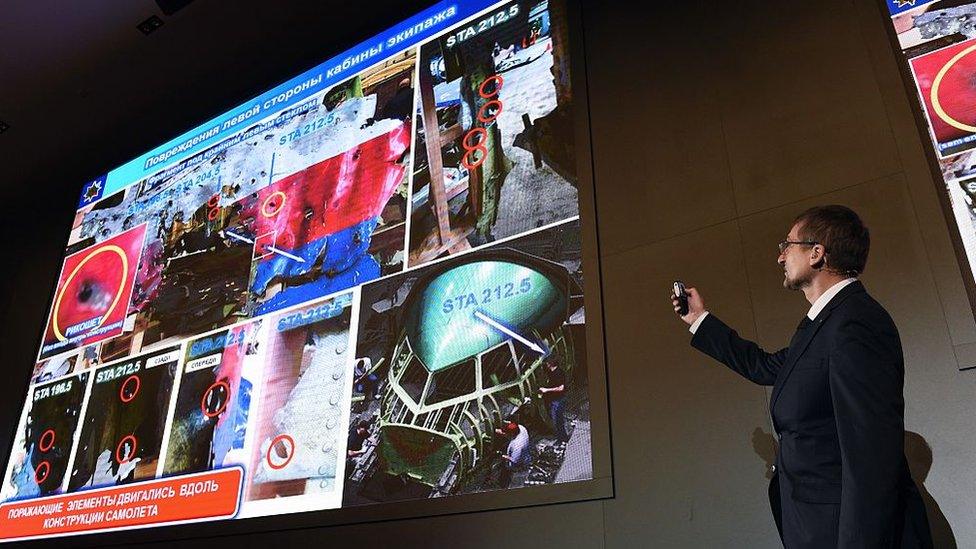
Over the years Russian authorities have presented alternative theories for the MH17 crash
According to Mr Higgins, investigators have been able to respond to Moscow's claims, as many of them "Russia stole from internet MH17 conspiracy theorists and presented as their own". That gave the team plenty of opportunity to familiarise themselves with the claims before Russia made them: "many of them had already been debunked by various online communities."

Before the trial began I joined a group of families as they laid 298 empty chairs on a stretch of lawn in view of the Russian embassy.
It's become a ritual for the relatives, who still seek "responsibility and full clarity" - as it says on a plaque attached to a wooden bench they have placed there.
Among them was Hans de Borst, whose only child Elsemiek, 17, was on board. She loved travelling and playing the piano.
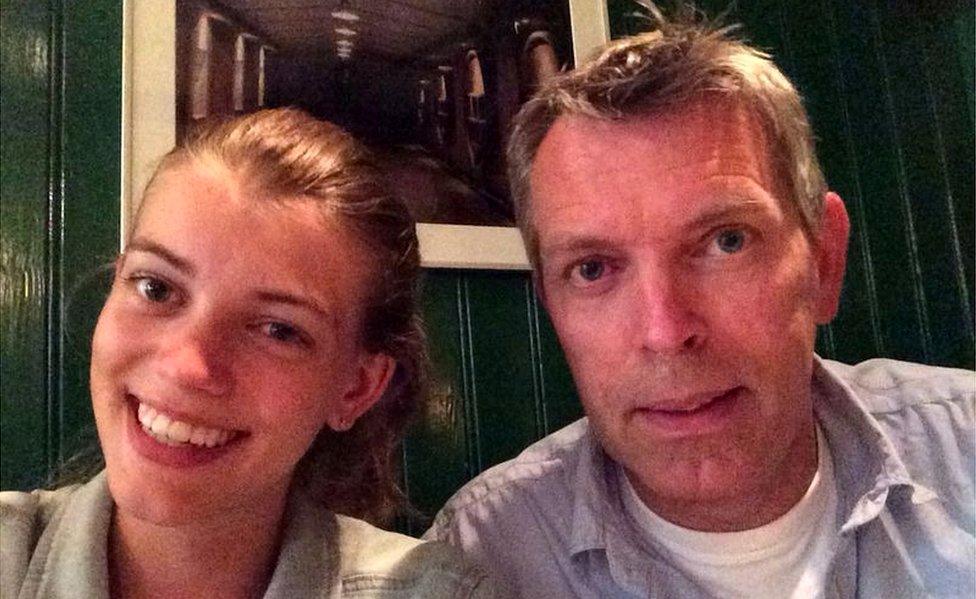
Hans de Borst believes he now understands better how events unfolded before his daughter Elsemiek's death
He delivered a letter, care of the embassy, asking Russian President Vladimir Putin to provide any material that could help reveal the truth about what happened that day and why.
Now the trial has begun, Mr de Borst is satisfied with the extensive evidence presented in court.
"It gave me a complete image of the days before [the crash]," he told me. "The bringing in of the Buk, the change in attitude [of the accused] after they found out what happened, the hierarchy in responsibilities and the exit."
What the court will hear next
The trial resumes on 17 June. The prosecution and defence will present their cases. Eventually it will also hear testimony from relatives, who will explain the gravity and impact of their loss.
Hans de Borst has learned to be dispassionate about the trial: "I can separate the grief I feel about losing Elsemiek and what is happening; otherwise I would be crying all day in the courtroom."
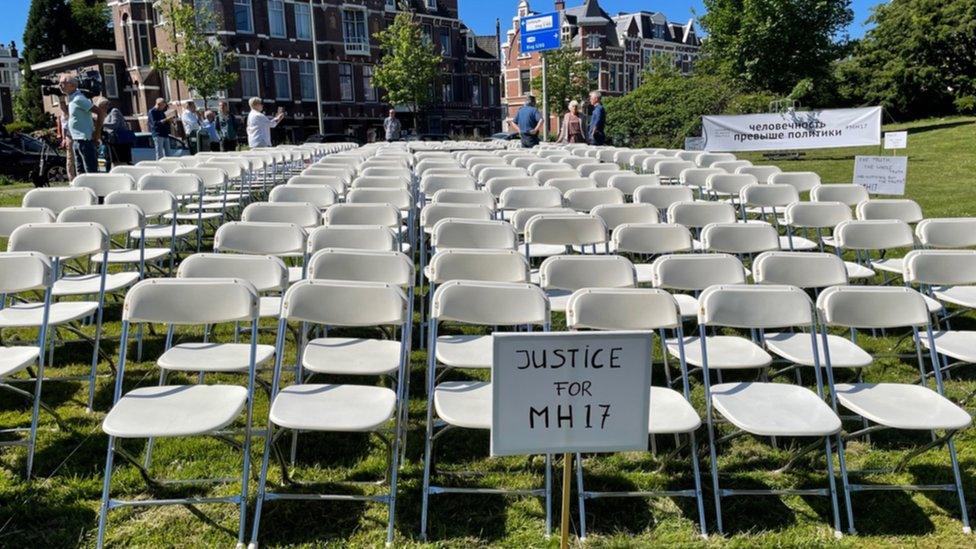
Every year the families of those who died put out 298 empty chairs in sight of the Russian embassy
The court will also deal with 299 claims for compensation from the next of kin.
Closer to justice
Days after the atrocity, I watched as a Hercules transport plane brought back victims' remains to a military base in Eindhoven while a bugler played the Last Post.
Flags represented countries that had lost citizens - the Netherlands, Malaysia, Australia, Indonesia, the UK, Germany, Belgium, the Philippines, Canada and New Zealand.
Dutch Prime Minister Mark Rutte later vowed that the person who pushed the button to fire the missile would be brought to justice.
For many that seemed an impossible task. But with the start of this trial, and the evidence presented in the past few days, external, there is a flicker of faith that the relatives may find out. Even if there is little expectation anyone will ever be extradited or confess to mass murder.
- Published16 October 2015
